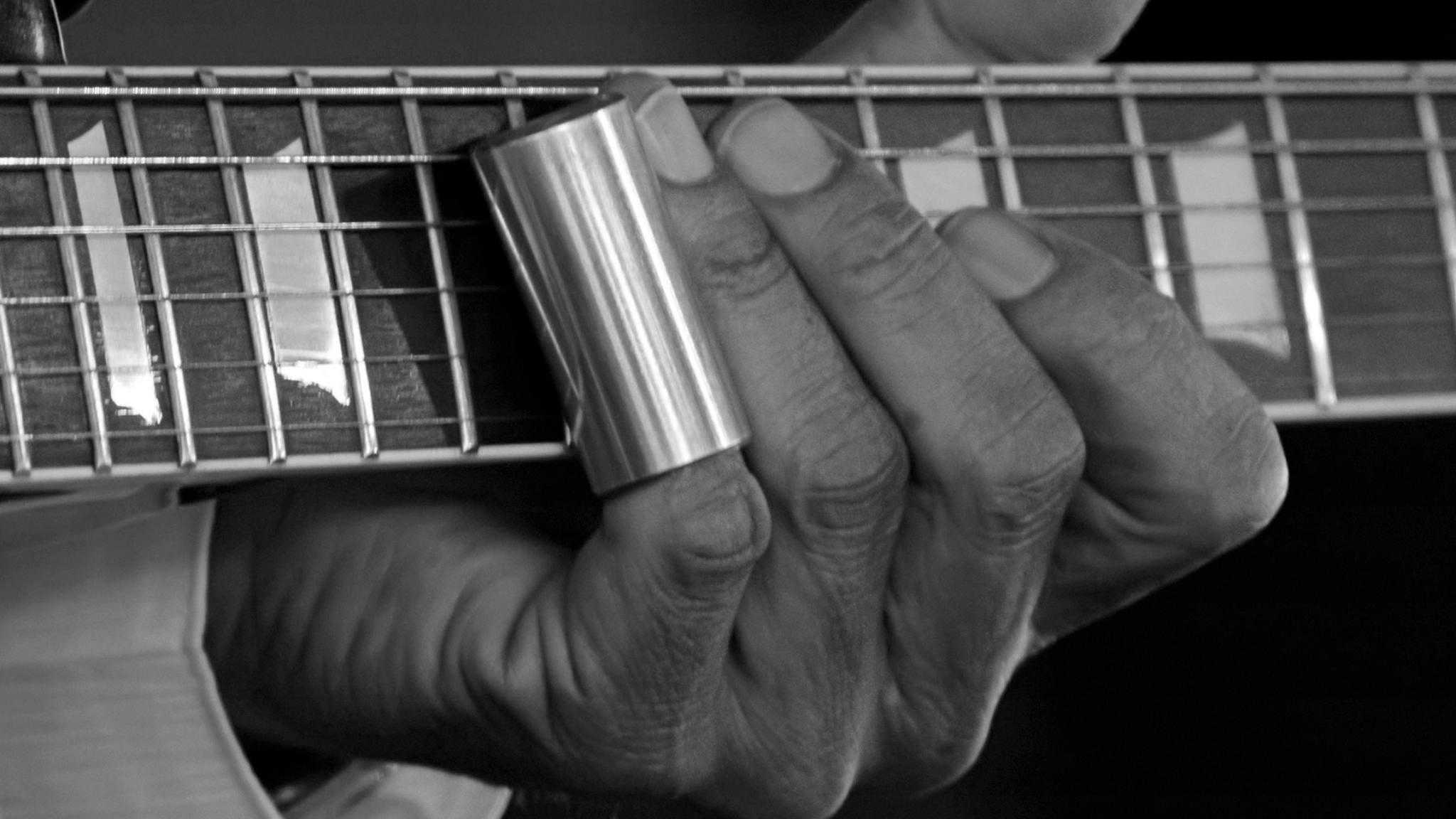Slide guitar is a particular method or technique for playing the guitar. The term slide refers to the motion of the slide along the strings.
You can slide across the strings with your fingers or with a metal or glass cilinder.
Sliding using a “slide”
Instead of altering the pitch of the strings in the normal manner (by pressing the string against frets), an object called a “slide” is placed upon the string to vary its vibrating length, and pitch.
This slide can then be moved along the string without lifting, creating smooth transitions in pitch and allowing wide, expressive vibrato.

Slide guitar is most often played (assuming a right-handed player and guitar): With the guitar in the normal position, using a slide on one of the fingers of the left hand.
With the guitar held horizontally, belly-up, using a metal bar called a “steel” (“slides” generally fit around a finger) held with the hand and wrist above the frets, fingers pointing away from the player’s body; this is known as “lap steel guitar”.
This same technique is used to play pedal steel guitar and the “Dobro” resonator guitar used in Bluegrass music.
I'm Joost Nusselder, the founder of Neaera and a content marketer, dad, and love trying out new equipment with guitar at the heart of my passion, and together with my team, I've been creating in-depth blog articles since 2020 to help loyal readers with recording and guitar tips.

